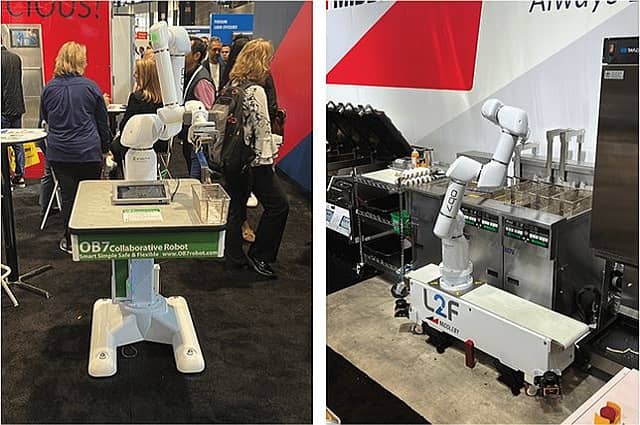Service robots in the hospitality sector aren’t just midcentury science fiction trope anymore. They are increasingly showing up as genuine helpers in places like hotels, resorts, theme parks, and, of course, restaurants. It’s safe to say that the future of robotics is now. Let’s take a look at just how it is that robots are pulling this off.
Breaking into the Industry
Food service robots have been emerging onto the scene for years as the technology has improved, but only quite slowly. They faced two key disadvantages compared to human labor: high up-front costs, and an uncertain long-term return.
Capital Costs
It can cost tens of thousands of dollars to buy and install food robots. Restaurants typically operate on thin margins and may not be able to afford this. So they need to be confident that their investment will pay off.
Fads & False Starts
Industry innovation is always full of fads and false starts, but spending tens of thousands of dollars on a dead-end fad could destroy a restaurant.
Everybody knows that robots are coming to food service, but how can businesses tell genuinely revolutionary innovations apart from trendy flashes in the pan? It’s not so easy.
The Pandemic Forced the Issue
The COVID-19 pandemic changed everything. In 2021 and 2022, retail and hospitality employers were chronically understaffed. Human labor simply wasn’t available. Faced with no alternative, many business owners and managers felt the time was right to take a chance on automating some of their operations with food service robots.
Since then, many of these robots have proven their worth and are here to stay.
What Do Food Service Robots Look Like?

Food service robots might surprise you by their appearance. They almost never look the way they were depicted back in 20th-century sci-fi, like metallic versions of humans. It’s not going to be Rosie from The Jetsons frying up your Corned Beef Skillet Hash with Eggs & Cheddar or your Pork Tenderloin Sliders with Three Sauces.
In fact, there’s no single robotic form factor at all: A food service robot looks however it needs to look in order to get its job done with a high degree of quality, consistency, and efficiency. This often means they have arms or other appendages on a central stalk, typically wrapped in a sleek housing that looks attractive and high-tech.
In the food service industry, here are a few examples of what we are already seeing:
- Automatic “bartenders” who can mix and serve cocktails.
- Robots that work French fry machines.
- “Food locker” robots that prepare simple dishes and dispense them like a vending machine.
What Can Food Service Robots Do?
Robots are at their best when they can do repetitive tasks like food prep—i.e., peeling and chopping vegetables. This tedious, time-consuming work has to be done every day. Giving this work to machines would free up human labor for more difficult tasks, thereby allowing a leaner human staff.
Another area where robots excel is in tasks that play out the same way each time. Running a griddle station and cooking things like pancakes and burgers is a good example.
What Are Food Service Robots Not Great At?
It should be said that human food service jobs are not going away. For one thing, customers want to see a human face. It might be a novelty to be served by a robot waiter, but most customers will have a better experience if a human waits on them.
Meanwhile, in the kitchen, humans will still have a place in preparing recipes, handling things that go wrong, doing spontaneous things like making extra dishes with leftover ingredients, and preparing complicated or highly delicate foods.
What’s in It for Customers?
Over the long run, robots will help control restaurant food prices, making it possible for us to continue going out to eat. They will also help to make dishes more consistent, which is something that repeat customers overwhelmingly prefer. And, as these robots’ costs come down, it will also become easier for small, independent restaurants to open, leading to more diversity in our dining options.
What’s happening in the food service industry right now is positively revolutionary, though it may not seem like it yet. With the use of service robots, restaurants are going to be able to do more and more with less and less human staff.


